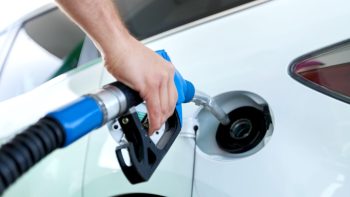
1. Opening Your Window Creates Drag
One of the most popular gas-saving myths is that opening your window will create extra drag, slowing down your car. Therefore, the advice goes, you should keep your windows closed and use the air-conditioning to cool down instead. However, multiple studies have found that opening the windows has no measurable effect on speed and fuel efficiency. Although adding attachments to your car can create drag, opening a window alone will not slow you down. Additionally, using your A/C liberally has a notable effect on fuel efficiency, reducing it by as much as 20 percent. Of course, the exact fuel usage depends on your climate, the temperature outside your car and your A/C settings. You can save energy by avoiding the air conditioning and driving with the windows down on the highways. If you can’t live without A/C in the hot summer months, try recirculating the interior air and running it at the lowest setting you can stand. That will lower the effect the A/C has on your fuel consumption.2. Acetone Can Improve Fuel Efficiency
Many drivers have heard at one time or another that adding the right chemical to their fuel tank will increase fuel efficiency. Virtually all these recommendations are false or downright dangerous. One of the most commonly recommended additives is acetone. Proponents claim that adding a bit of acetone to the tank will increase fuel efficiency by as much as 30 percent. Related Article: Do you have what it takes to be an extreme saver? The reality: acetone provides no scientifically confirmed benefit in the fuel tank. Additionally, acetone can burn through rubber components in the tank, leading to major problems down the line. Finally, if you spill any acetone on your car while pouring it into your fuel tank, you risk stripping the paint of your car. Skip the acetone and other alleged fuel additives.3. Over-Inflated Tires Use Less Gas
It’s true that underinflated tires lower fuel efficiency. Many drivers reason that if that is the case, then perhaps overinflated tires might be even more fuel-efficient. However, multiple studies and tests have found no benefit whatsoever to overinflating your tire. Not only does it not improve fuel efficiency, it’s also a risky move. Overinflated tires wear out faster than tires that are inflated to the recommended pressure. Additionally, it lowers the vehicle traction, increasing the chances that you lose control of the car while driving. Finally, overinflated tires are much rougher than properly inflated tires. At best, you are facing an uncomfortable and bouncy ride. At worst, you could damage the structure of your vehicle. The best way to protect your vehicle is to keep your tires properly inflated. Check the tire manufacturer’s recommendations and inflate your tires to the correct pressure.4. Fuel-Saving Gadgets Can Improve Efficiency
If you look up tips for reducing fuel consumption, you will find dozens of products on the market advertising themselves as fuel-saving gadgets. These products claim to do anything from cleaning out your engine to generating additional airflow. Virtually every single one is bogus, ineffective and potentially dangerous. In some cases, they could void your vehicle warranty. Any fuel-saving gadgets are a total waste of money according to the Environmental Protection Agency.5. Buy Gas in the Early Morning
One of the most common myths around gas is that you can maximize the amount of gas you buy by purchasing early in the morning, when the temperatures are low. In fact, this will not have any noticeable effect on the amount of fuel you use. This particular gas myth isn’t dangerous, but it can be a waste of your time. It is true that gas becomes denser in cold temperatures. However, this effect is not noticeable in your 15-gallon tank. The temperature variation between gas stored underground in a tank during the day versus at night is just a few degrees. Change in fuel density can only be detected with temperature differences of around 70 degrees or more. In other words, feel free to sleep in – your early-morning trek to the gas station isn’t paying off.6. Switching Your Car Off Wastes Gas
When you’re sitting at a red light idling endlessly, do you turn your car off or idle until the light changes? You may have heard that the energy from turning your car on and off burns more than leaving it idle. However, that’s not the case. Turning your car on and off uses a negligible amount of gas and does no damage to modern engines and batteries. Idling for longer than 10 seconds burns more gas than turning your car off and on does. That means if you suspect you’ll be waiting at the light for more than 10 seconds, you can save gas and the environment by turning your vehicle off. Related Article: 9 Tips for Getting the Best Deal on a Used CarBy Admin –